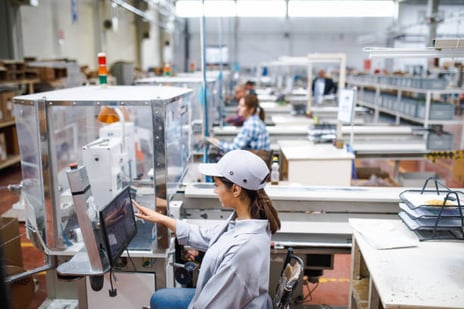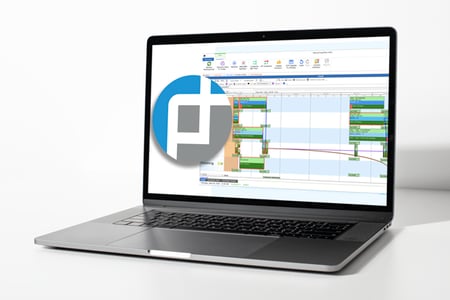
Harnessing IIoT for Real-Time Monitoring in Packaging Manufacturing: A Roadmap to Smart Factory Integration with APS and ERP Systems
In packaging and containers manufacturing, real-time decision-making has become more than a value-add—it’s essential. As product cycles shorten, consumer demands fluctuate, and sustainability pressures rise, Manufacturing IT Managers face mounting challenges in keeping operations efficient and responsive.
Enter Industrial Internet of Things (IIoT)—a transformative force that connects machinery, sensors, and systems to deliver continuous, actionable insights. But real-time visibility alone isn’t enough. The power of IIoT is fully unleashed when integrated with Advanced Planning and Scheduling (APS) platforms like PlanetTogether, and enterprise systems such as SAP, Oracle, Microsoft, Kinaxis, and Aveva.
This blog explores how IIoT integration enables real-time monitoring in packaging manufacturing, the technical roadmap to making it work, and the value it brings to Manufacturing IT Managers who aim to optimize performance, cut costs, and accelerate innovation.
The Case for IIoT in Packaging Manufacturing
The packaging sector, especially in industries like food, beverage, and consumer goods, is characterized by:
High throughput production lines
Diverse SKUs with frequent changeovers
Tight quality and regulatory compliance requirements
Just-in-time (JIT) delivery pressures
In this context, IIoT provides key capabilities:
Real-Time Equipment Monitoring: Track machine status, production output, and performance efficiency (OEE) in real time.
Predictive Maintenance: Prevent costly downtime by identifying wear-and-tear before failures occur.
Energy Management: Monitor and optimize energy usage to support sustainability goals.
Quality Control Integration: Capture and analyze quality metrics during production, not after.
Yet, despite its potential, IIoT’s impact is limited when siloed. This is where integration becomes critical.

The Integration Ecosystem: IIoT + PlanetTogether + ERP/MES
PlanetTogether APS:
PlanetTogether enables manufacturers to create optimal production schedules that balance capacity, demand, inventory, and labor constraints. By integrating with IIoT, it can access real-time shop floor data to update plans dynamically.
ERP Systems (SAP, Oracle, Microsoft):
ERP systems provide the foundational business data—materials, orders, financials, and logistics. IIoT data can flow into ERP modules to enhance traceability, costing, and compliance.
MES Platforms (Kinaxis, Aveva):
Manufacturing Execution Systems track and document production at the shop floor level. IIoT augments MES capabilities by providing high-resolution data from machines and sensors.
The Middleware Layer:
Data orchestration platforms like OPC UA, MQTT brokers, or Microsoft Azure IoT Hub help manage the ingestion, normalization, and routing of IIoT data into APS and ERP systems.

How Real-Time Monitoring Transforms Operations
Dynamic Scheduling with PlanetTogether
When IIoT is integrated with PlanetTogether APS:
Schedulers are alerted to machine downtimes or slow cycles in real time.
The system can auto-adjust production sequences based on actual throughput or unplanned stoppages.
Energy-efficient scheduling becomes possible by aligning runs with off-peak power periods detected through IIoT analytics.
Example:
If a thermoforming machine reports a deviation in heat settings that might affect quality, PlanetTogether can delay the next run of that SKU, reroute jobs to available machines, and notify ERP about potential delivery impacts.
Real-Time Feedback into ERP Systems
IIoT data can update ERP modules in real time:
Inventory Management: As packaging materials are consumed or produced, IIoT sensors automatically adjust inventory levels in SAP or Oracle.
Costing: Actual machine run times and power usage are recorded, giving finance teams accurate production costs.
Compliance and Audit Trails: Environmental conditions like humidity or temperature can be logged for packaging that requires strict storage conditions.
Predictive and Preventive Maintenance
Combining IIoT data with Microsoft Dynamics or Aveva MES enables predictive analytics:
Maintenance teams get alerts based on vibration patterns or motor temperatures.
PlanetTogether can reassign jobs before equipment failures, minimizing production risk.
ERP systems automatically adjust maintenance schedules and parts inventory based on usage trends.
Outcome:
Unscheduled downtime is reduced, asset life is extended, and production planning becomes more resilient.
Building the IIoT-Enabled Smart Factory: Step-by-Step for IT Managers
Step 1: Audit Existing Infrastructure
Inventory current machines, PLCs, SCADA systems, and sensors.
Identify data gaps that hinder real-time visibility.
Assess communication protocols (OPC, MQTT, REST APIs).
Step 2: Implement Sensor Networks and Edge Devices
Equip legacy machines with retrofittable IIoT sensors.
Deploy edge gateways for real-time preprocessing and local analytics.
Step 3: Integrate with APS and ERP Systems
Use middleware to standardize data streams.
Map data points to scheduling logic in PlanetTogether (e.g., machine speed, batch size).
Enable bi-directional communication—allow APS to send instructions back to the shop floor.
Step 4: Establish Dashboards and Alerts
Create visual monitoring tools for production teams.
Use IIoT analytics to generate alerts for anomalies, production delays, or energy overconsumption.
Step 5: Train Teams and Optimize Continuously
Upskill production staff and planners to leverage real-time data.
Use PlanetTogether’s what-if analysis and ERP reports to continuously refine processes.
Challenges and How to Overcome Them
| Challenge |
Solution |
| Legacy equipment without IIoT support |
Use edge devices and retrofit kits to capture machine data |
| Data overload |
Implement cloud analytics platforms with filtering and aggregation |
| Integration complexity |
Use standards-based middleware and APIs; rely on vendor integration support |
| Cybersecurity |
Deploy IIoT within segmented networks, implement strong access control |
For Manufacturing IT Managers in packaging and containers manufacturing, IIoT isn’t just another digital initiative—it’s the foundation for real-time visibility and control. When integrated with PlanetTogether APS and ERP platforms like SAP, Oracle, Microsoft, Kinaxis, or Aveva, IIoT unlocks a responsive, intelligent factory that adjusts in real-time, not after the fact.
As demand variability, sustainability targets, and production complexity increase, the ability to see, decide, and act instantly will separate high-performing facilities from the rest.
By embracing IIoT and aligning it with advanced scheduling and enterprise systems, IT leaders can future-proof their operations and become the architects of next-gen manufacturing excellence.
Are you ready to take your manufacturing operations to the next level? Contact us today to learn more about how PlanetTogether can help you achieve your goals and drive success in your industry.


